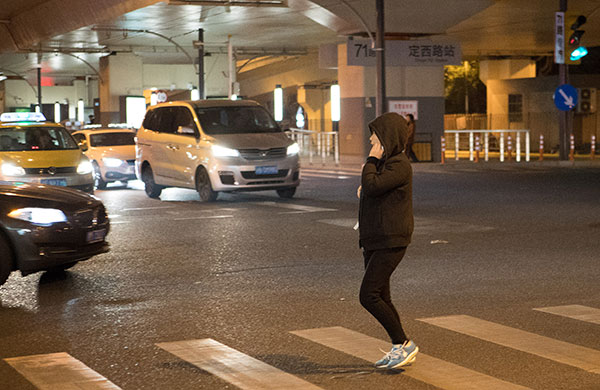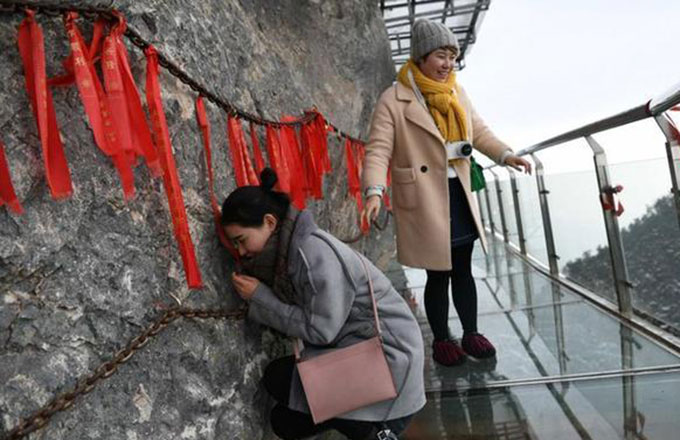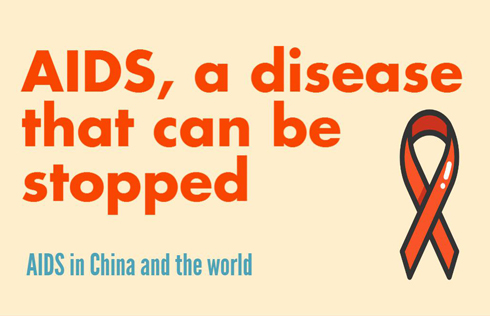Shanghai mulls red line for jaywalking
 |
|
A pedestrian is seen crossing a road against the light in Shangha on Wednesday.[Photo by Gao Erqiang/China Daily] |
Shanghai is considering drawing a red line, or many of them, to combat jaywalking.
The lines, marked on the edge of sidewalks like in Hong Kong, were suggested by some local legislators to curb the common bad habit of jaywalking.
The red lines are marked where people can never cross the street, and violators face severe punishment, Yu Guoqiang, a deputy to the Shanghai People's Congress, the city's legislative body, said at the ongoing annual session on Tuesday.
"When I was in Hong Kong, I learned from residents that they had a very clear concept of the red lines from childhood, saying that in no case would they ever cross the street over a red line," Yu said.
Jaywalking impedes traffic safety in many Chinese cities. In Dalian, Liaoning province, jaywalking caused 155 traffic accidents involving death from the beginning of 2015 to April last year. In Chonqing municipality, nearly half of all traffic accidents involving injury or death were triggered by jaywalking in 2015.
"Changes can start from the current generation, if they have an absolute respect for the red lines and a clear appreciation of rules," Yu said.
Li Feikang, another local deputy, said education on traffic rules, including the red lines, should be compulsory in schools.
"That way, the young generation can spread the information to their parents," Li said.
"If the law stipulates that anybody crossing the street over a red line, and causing his or her injury or death in a traffic accident, will assume full responsibility for the accident, then I believe it will force people to cross the street only at legitimate crossings," he said.
Under the current law, the driver needs to pay 10 percent of the medical costs of an injured pedestrian after an accident, even if the driver is proven to be faultless.
Another lawmaker, Chen Danyan, said such a legal provision is unreasonable and doesn't stop pedestrians from breaking the law on the street.
"A group of deputies, including me, conducted traffic inspection at a number of intersections in the city center last summer, and found the number of violations involving pedestrians and non-motorized vehicles was much higher than motor vehicles. Pedestrians' disregard of traffic rules make traffic congestion worse," said Chen.
In March, Shanghai initiated a campaign to crack down on traffic violations, mainly targeting motor vehicles.
"Under the current law, jaywalkers are fined 10 yuan ($1.45), which is too little to work as a deterrent," said deputy Liu Mingang.



















